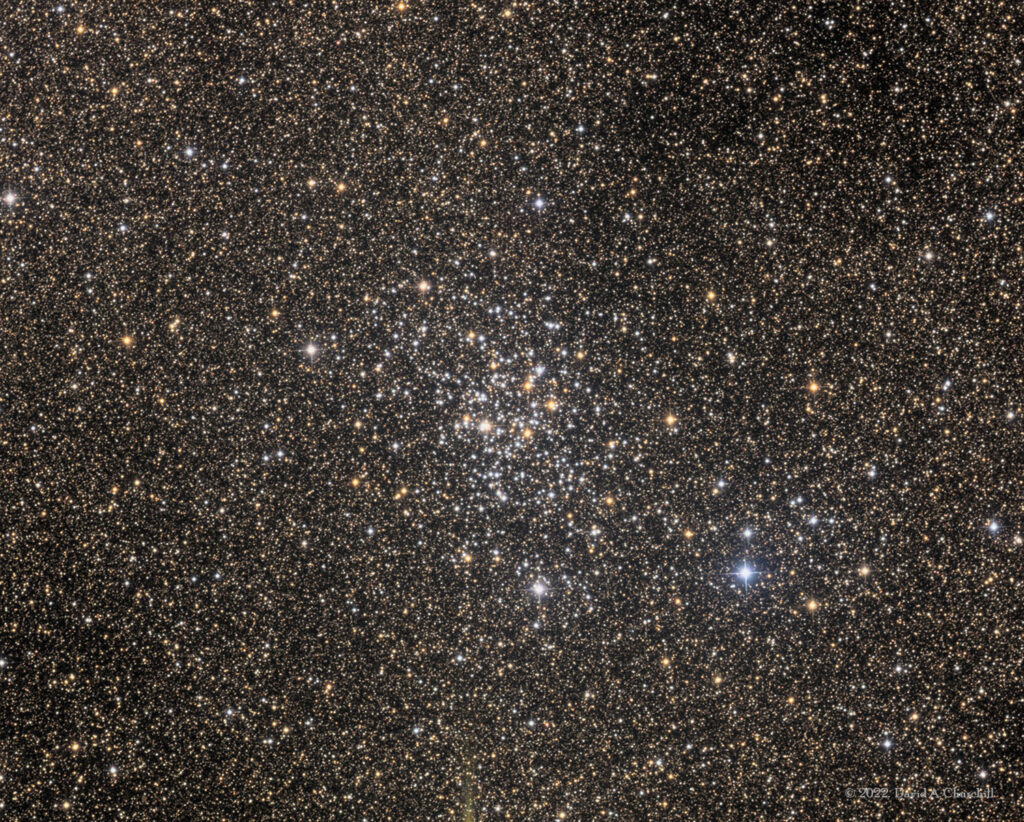NGC 6067
Open Cluster, Norma
- Description
- Technical
- Links
NGC 6067 is an open cluster in the constellation Norma. It is located to the north of Kappa Normae, with an angular diameter of 12′. Visible to the naked eye in dark skies, it is best observed with binoculars or a small telescope, and a 12-inch aperture telescope will reveal about 250 stars. Discovered by James Dunlop in 1826, it has been described by John Herschel as “a most superbly rich and large cluster” and by Stephen James O’Meara as “one of the sky’s most stunning open star clusters”. Its brightest stars have an apparent magnitude of around 8. There are 84 member stars with an apparent magnitude brighter than 12.
NGC 6067 is located in the Norma Star Cloud in the Norma Arm of the Milky Way and is 15 to 20 times as rich as the Pleiades and about the same age. It is thought to be around 102 million years old, and contain 893 solar masses. Two Cepheid variables, QZ Normae and V340 Normae, have been identified as members of the cluster, while a third nearby Cepheid—GU Normae—is considerably closer. Its period is only 3.5 days compared with the longer period of V340 Normae, indicating it is intrinsically less luminous (and hence closer), and its age has been estimated at 134 million years and hence too old to belong to the cluster. V340 Normae is a yellow supergiant of spectral type G0Ib that varies between magnitudes 8.26 and 8.60 over 11.28 days, while the fainter QZ Normae varies between magnitudes 8.71 and 9.03 over 3.79 days.
Telescope: Planewave CDK17 (FR) f4.5
Mount: Astro Physics 1600GTO
Camera: QHY16200A/ Integral FW
Guider: AP 155EDF f5.4 / FLI PL29050
Filters: Astronomik 36mm LRGB
L: 48×5 mins = 240 mins, R: 24×5 mins = 120 mins, G: 24×5 mins = 120 mins, B: 24×5 mins = 120 mins
Total Imaging Time: 10h 00m
Data Imaged remotely over 2 nights during May 2022.
Imaged from Observatorio El Sauce, Chile, in partnership with Fred Espenak.
Data acquisition & Processing by David Churchill.
None

